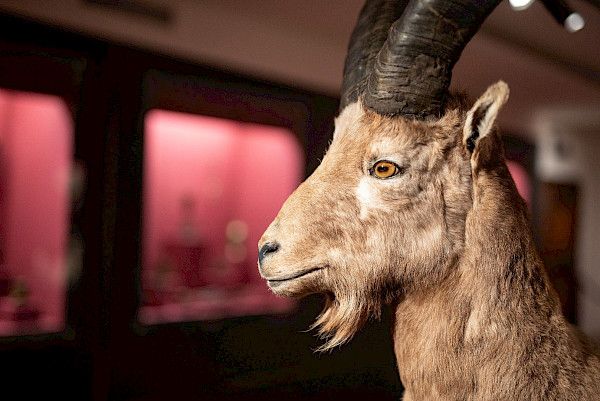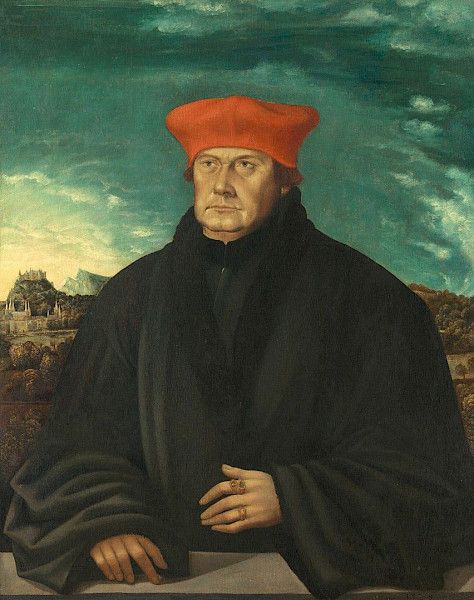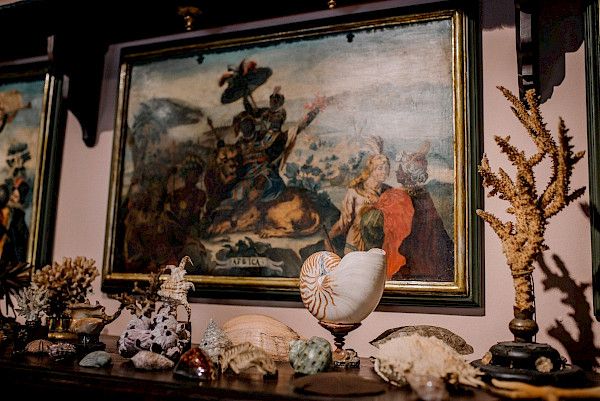Medieval glass - The stained glass windows of St. Lorenzen ob Katsch
From 11 May 2025
This special exhibition is dedicated to the art of medieval stained glass in and around the former archbishopric of Salzburg. The focus is on the 600-year-old panes from St. Lorenzen ob Katsch, which are being presented together again for the first time in over a century after an eventful history.
The items on loan from the Jagiellonian University in Krakow, the MAK Vienna, the Esterhazy Collection and private Austrian collections bear witness to the high-quality craftsmanship of these fragile treasures. They tell stories of saints and express the high sense of status of spiritual and secular dignitaries.
The exhibition is on display until 31 October 2025.
Carved ibex horn - a treasure from the Archbishopric of Salzburg
From March 2025
In the 17th and 18th centuries, Salzburg was considered the centre of ibex horn carving. This ancient craft bears witness to the awe and imagination that people felt when they encountered this ‘King of the Alps’. In the perception of that time, the ibex must have possessed extraordinary powers, which people wanted to experience in a variety of ways. One of the most important private collections of ibex horn carvings is on display as part of the special exhibition.
The exhibition is open until October 31, 2025.
Miner. Bishop. Emperor. - The power of Mining between the Middle Ages and modern times
11 May 2025 to 31 October 2026
Original objects from the time of the 1525 rebellion reveal the background to the uprisings by the peasants and miners of the archbishopric of Salzburg and the Princely County of Tyrol. Silent witnesses such as St. Catherine from the plundered Neustift monastery, the famous portrait of Salzburg Archbishop Matthäus Lang von Wellenburg or the crossbow of Emperor Maximilian I. show the worries and hardships of that time.
Foto: ©KHM-Museumsverband
Nora von Watteck’s Cabinet of Curiosities
From 27 May 2021
In Renaissance and Baroque Europe, many rich princes had representative cabinets of curiosities. They were supposed to demonstrate the owner’s wealth, artistic understanding and zeitgeisty spiritual level.
Nora von Watteck was Salzburg’s most prominent folklorist. Her interest in art history was fostered early on by her grandfather, an antique dealer who had a cabinet of curiosities of his own.
Nora von Watteck started to add to her grandfather’s cabinet of curiosities located in the Brodgasse Alley in Salzburg. After Nora von Watteck’s death in 1993, her son Arno replenished the collection und organised it.
Thanks to close ties between Arno von Watteck and museum director Hermann Mayrhofer, this cabinet of curiosities now forms part of the Museum of Mining and Gothic Art Leogang. The exhibition aims at preserving the memory of Nora von Watteck as well as the outstanding collection, making it accessible to the public.



